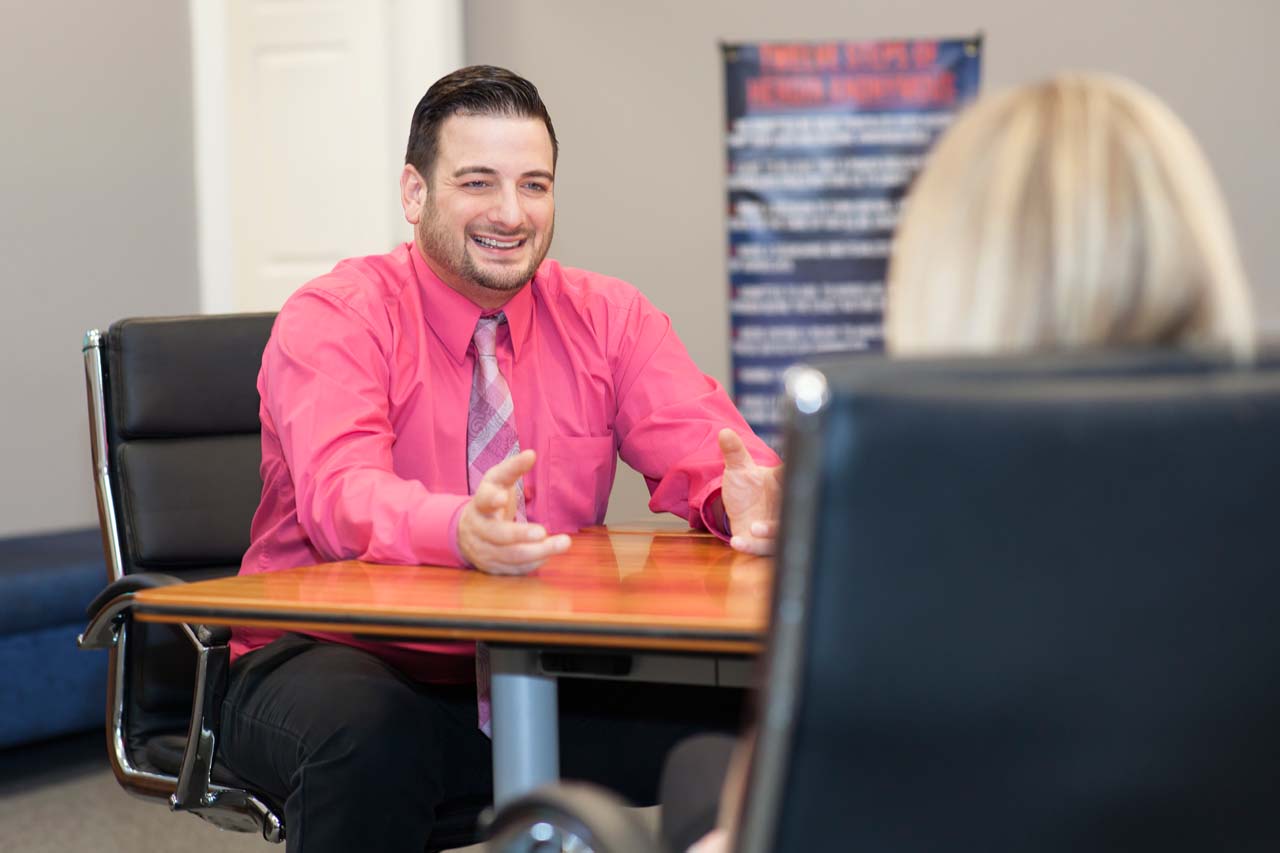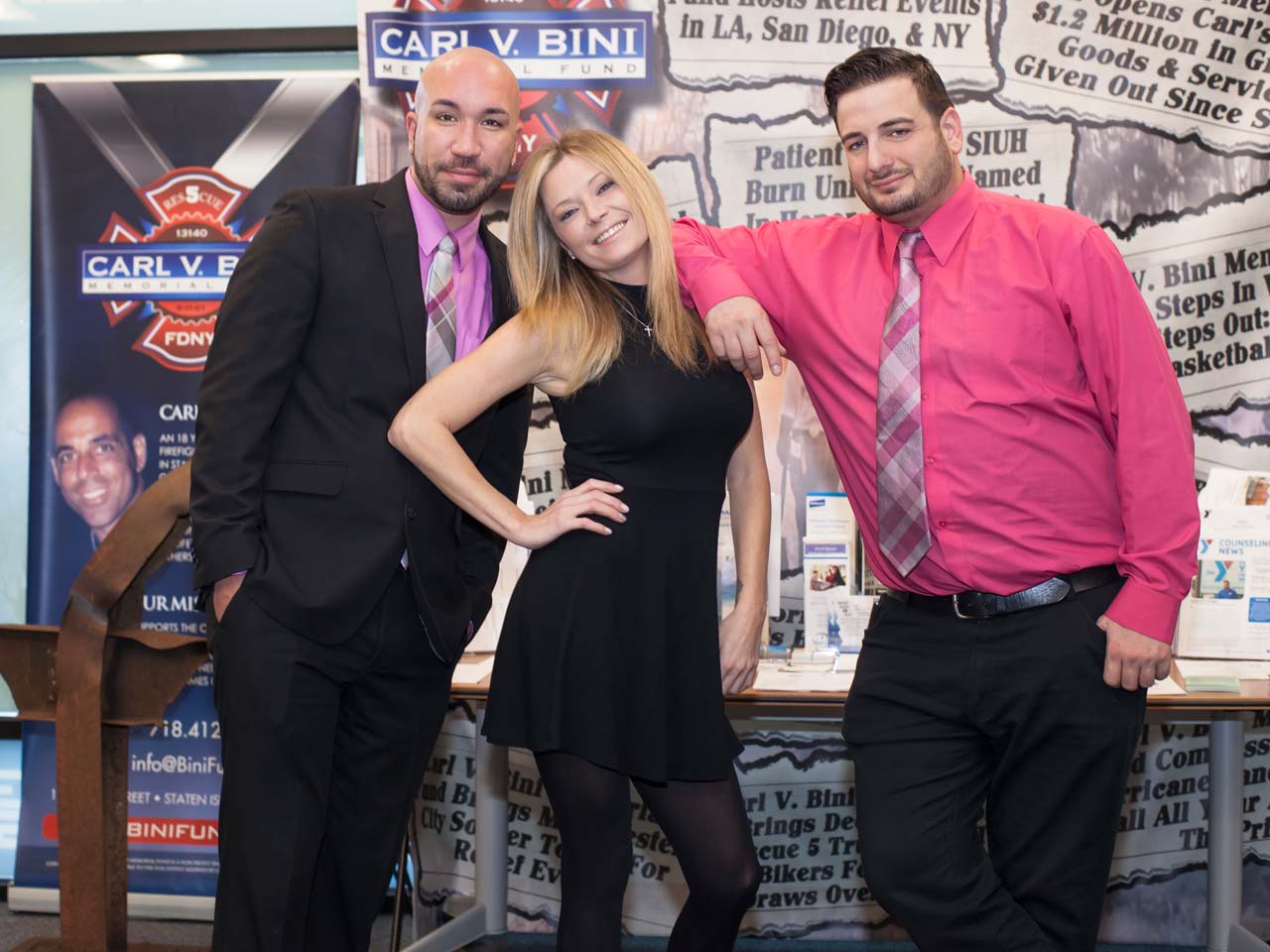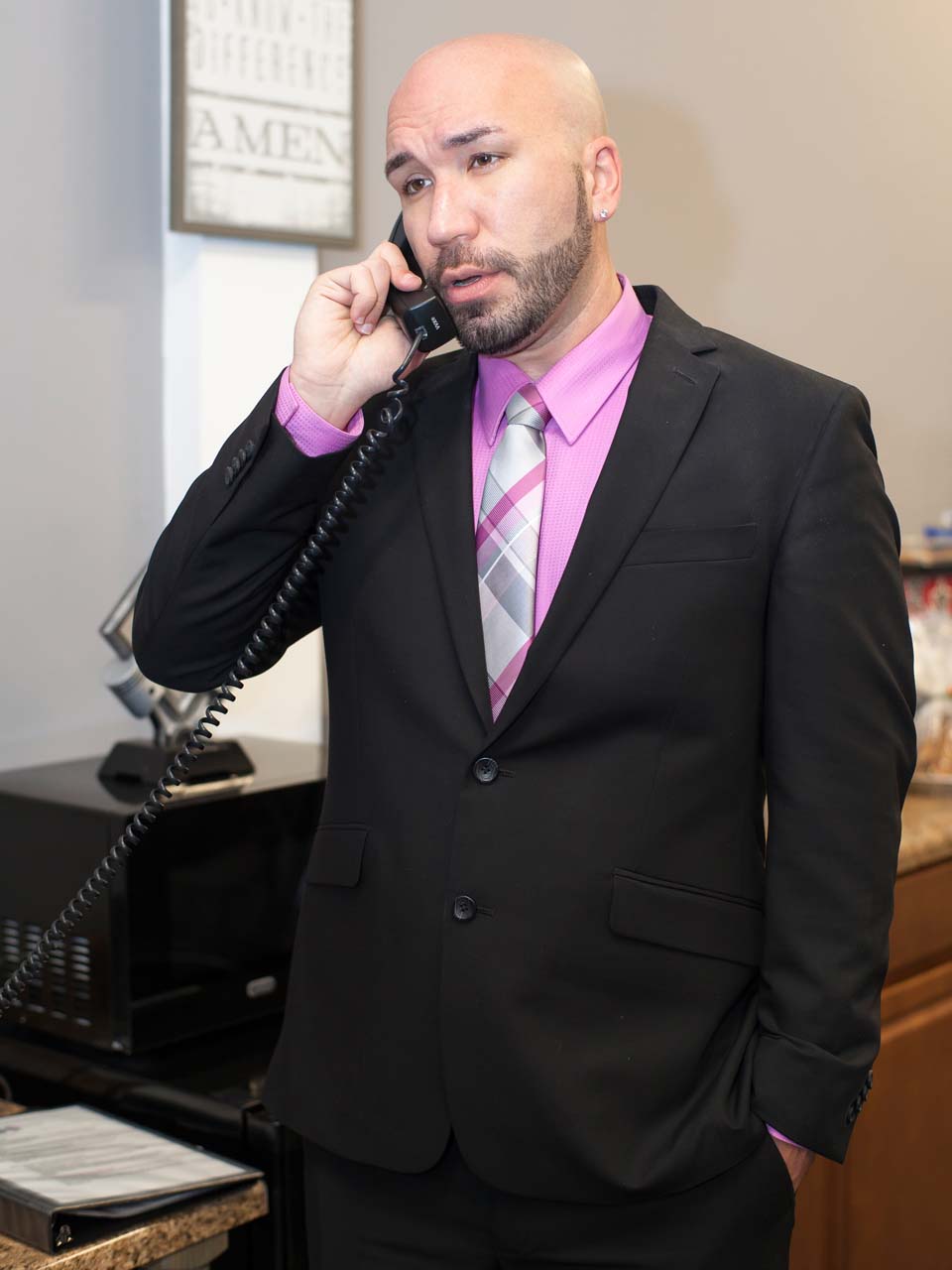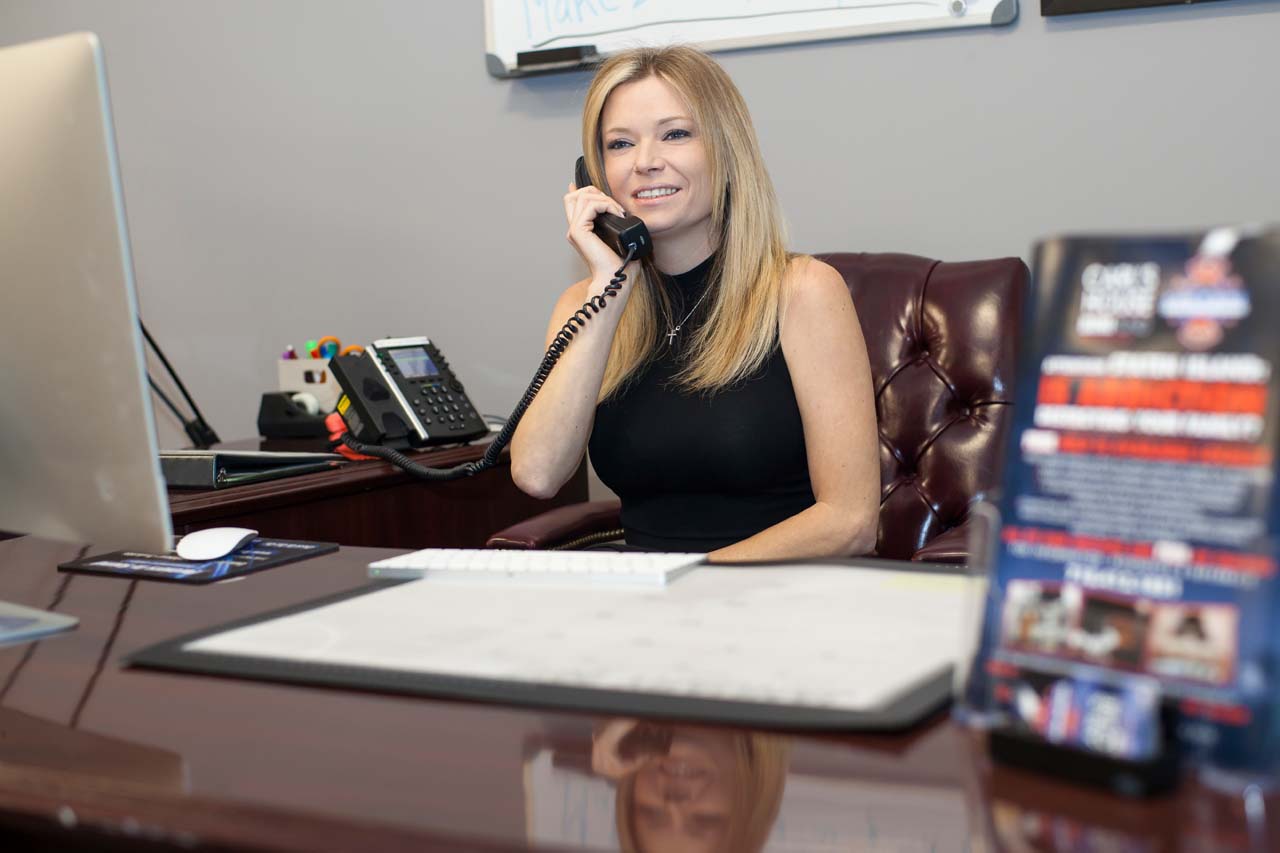Rossville-based Carl’s House offers peer-to-peer services for those grappling with addiction
by Jessica Jones-Gorman • PHOTOS BY ROBERT NUZZIE
Marco DiDonna’s addiction started with pills: He was constantly doctor-shopping to find a high, subsisting on a steady stream of prescription opiates for his daily fix. But when a federally issued pain-medication crackdown basically obliterated what had been liberal prescribing practices statewide and affected DiDonna’s supply, he found himself switching to heroin.

“I lost my 20s to opiates and heroin,” DiDonna said. “I used for 10 years, went to rehab three times, but couldn’t commit to getting clean because when I was high, I didn’t want to listen to family members or counselors—I felt like they had no clue what it was like to walk in my shoes.”
In the beginning, the high was worth it, DiDonna admitted, detailing a party-fueled existence that he described simply as “fun.” But there was also loneliness and guilt, and a constant fear of death. During his first two stints in rehab, he was not able to break past the physical addiction into recovery.
“I wanted to get clean, but the physical addiction was so strong. Imagine someone telling you not to breathe when you have the flu, but [multiply] the suffering by 100,” DiDonna explained. “It’s very easy to give up, especially when you think that if you have one more pill, you’ll come out of it.”

It took numerous arrests and hitting rock bottom for DiDonna to finally break free. In 2014, he entered a rehab program, and it worked. He has been clean ever since.
“I was done fighting with my parents, done with disappointing myself and my family,” the former addict said. “I was finally ready to start living a better life.”
After a year of sobriety, DiDonna started helping other addicts whose family members contacted him personally after hearing of his success.
“I just started meeting up with random people because they needed help and didn’t know where to go,” DiDonna said. “I would get a call asking if I could talk to a brother, sister, son, or daughter. And I would just go, have a conversation, and let them know about the resources that are out there if they were willing to get the help.”

The meetings sparked an idea for DiDonna about forming a community resource center on Staten Island. (The borough has ranked second in New York City drug overdoses since 2012.)
“There were 74 reported deaths in 2014 alone,” DiDonna said. “There is truly an epidemic happening on Staten Island, and people need help.”
So, DiDonna teamed up with his brother, Massimo, who serves as chairman and president of the The Bini Fund, a Staten Island-based nonprofit that honors Carl Bini, a New York City firefighter who lost his life on September 11, 2001.
“Carl was a hero who dedicated most of his life to helping people in need,” Massimo DiDonna said. “And this initiative honors that dedication.”

The result is Carl’s House, located in a strip mall on Veterans Road West in Rossville. Its mission is to bridge the gap between addiction and recovery for addicts and their families. The free outreach center forms strategic alliances with treatment facilities, both in New York and nationally, with the goal of quickly and appropriately placing those seeking help into the right programs. The staff is made up of individuals who are successfully on the road to recovery.
“This is a peer-driven recovery house, because that is what helped me,” DiDonna said. “It’s run entirely by volunteers in recovery, and we offer peer-to-peer services, which means there’s one addict or alcoholic talking to another. There are no doctors or counselors; you’re in a room with someone who’s been where you’ve been, so you can talk to them on a real level.”
In addition to peer-to-peer services, Carl’s House offers assistance about treatment placement and long-term facilities, plus information about family groups and outgoing speaking engagements. There are 12-step programs for the family and addict, Narcan training and interventions, and support for connecting the addict with the recovery community. Fellowships, dances, sporting events, meditation, yoga, and art therapy are among the options for socialization.
“Since this initiative began, our organization has been asked what makes Carl’s House different, why are we pursuing this issue, and what is our ultimate goal for the facility,” Carl’s House notes on its website. “Our answer has been transparent and straightforward time and time again: Our mission is to help the Island community in a time of need, and there is no greater need right now than combating the epidemic our neighbors, families, and friends are currently facing.”
According to DiDonna, no matter how many programs, services, and facilities are dedicated to tackling the addiction issue, the reality is that much of the general population is simply unaware of them.
“There are delays in acceptance into programs, and in some cases individuals who are aware of where to get help end up in programs that aren’t a true fit for their situation,” he said. “Carl’s House is different because it is an unbiased referral center offering program placement, education, and resources to those who seek them, all for zero cost.”
And because DiDonna is familiar with the stumbling blocks addicts face, the organization addresses many of those as well.

“You go to rehab to make a fresh start and clear your head, but the real work happens when you come home,” DiDonna said. “It is crucial for a person in treatment to come home to something. That’s why we help recovered addicts obtain jobs or link them up with church organizations, with softball or flag-football teams. Without some sort of activity or involvement, it’s possible that a relapse could occur.”
Although Carl’s House has helped a number of addicts since opening its doors in December of 2015, DiDonna is hesitant to describe its work as a success.
“I hate that word. I’d much rather say we are creating an impact,” he said. “Parents call us because they don’t know where to turn and most often forcibly bring their son or daughter here kicking and screaming. But we talk for an hour and that same kid can walk out totally different. Parents call back and ask us what we did. But I don’t like to call these success stories, because living with addiction is an everyday battle.”
What DiDonna truly hopes to find success with is changing the stigma of addiction on Staten Island.
“Those who aren’t personally affected by addiction tend to vilify those who are,” he pointed out. “If the community wants to see an end to this horrible epidemic, they have to stop beating the addicts down. Addiction does not discriminate. The borough is being ravaged by this problem, and without the right intervention, the issue will only grow. Our goal is to bring more services here and make families aware of the programs that already exist. There is no easy answer to this problem, but we want people to know that we’ve been there… and that we are here to help in any way we can.”
Carl’s House
585-B Veterans Road West
718.412.1851 / binifund.org
